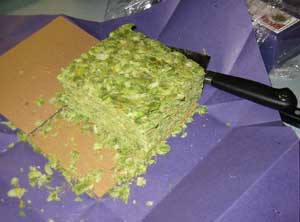Yeast can be one of the most expensive parts of brewing. If you’re hooked on liquid yeast like me, the $5 a tube is about a third of the price of a batch. As much as I enjoy the work of the folks at the two major liquid yeast producers, I’d like to cut down on the amount I spend on yeast. I’m going to be writing about 3 easy ways of accomplishing this starting with the simplest: Reusing the yeast cake.
This is as simple as it sounds, and works quite well. Of course, you need to time the process so you’re done with primary fermentation on one batch at the same time as you brew. Here’s the basic idea. Beer 1 is ready to move from primary fermentation to secondary. Beer 2 has just cooled after brewing. Siphon Beer 1 into a sanitized vessel for secondary leaving as much of the sediment behind as possible.
Assuming Beer 1 smells ok, siphon Beer 2 directly on to the leftover yeast cake and trub. You might want to gently stir the beer to get some of the yeast into suspension. With any luck, Beer 2 will start fermenting quickly.
Considerations
- Any strong flavor or color from Beer 1 might manifest itself in Beer 2, so don’t brew an imperial stout and reuse the yeast cake for a kolsch.
- Be aware of any odd smells. If the yeast is bad or infected, reconsider using the cake.
- There will be all sorts of undesirable gunk left over from Beer 1. If this worries you, consider washing the yeast.
- Don’t use the yeast cake too many times. Yeast will mutate and its hard to know how your beer will taste

